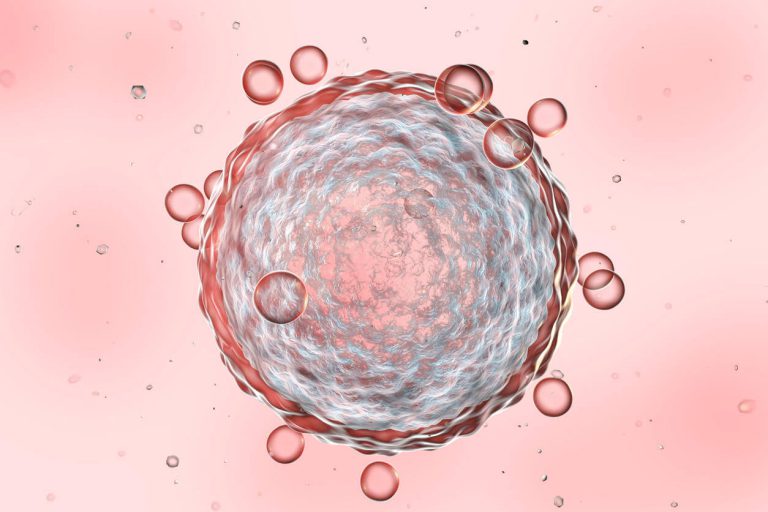Female fertility testing is considered appropriate when a woman under 35 has not become pregnant after a year of trying (with regular, unprotected intercourse), or a woman over 35 has not become pregnant after 6 months of trying.
Fertility tests for women are designed to discover any potential causes of infertility that a woman might be facing. Since there are many causes of infertility, and many women who are struggling to get pregnant have more than one potential fertility-related problem, there are many different kinds of fertility tests available.
The testing plan for each woman facing infertility is unique and crafted by her doctor for her specific situation. However, there is a typical order to the tests that a woman might undergo.
First Fertility Appointment
At the first infertility appointment, the doctor will ask lots of relevant questions about your health history, sexual habits, use of medications, drugs, alcohol, and other substances, what methods of birth control you’ve used, whether your periods are regular, and so on. (If you’re already using a fertility-tracking app like OvuView or Fertility Friend, it can be helpful to bring in several months’ worth of data on your periods for your doctor to see at this appointment.)
After this period of questioning, your first round of testing will likely include a physical exam and blood tests.
Physical Exams
The physical exam will probably include a pelvic exam and a pap smear to check the health of your reproductive organs and breasts, and to look for problems like tumors, cysts, infections, or inflammation.
Blood Tests
Initial blood tests might be used to check for:
– thyroid hormone levels
– prolactin levels (the hormone that makes you produce milk after birth)
– male hormone levels (testosterone)
– diseases like HIV or hepatitis
Ovulation Evaluation
After this initial examination, the doctor will likely want to schedule several appointments for an ovulation evaluation. The ovulation evaluation consists of several tests, which are all designed to determine if and when you are ovulating, and the level of different ovulation-related hormones you have at various points in your cycle.
– To ensure that you are ovulating, the doctor may have you track your basal body temperature (BBT), which is your temperature first thing in the morning, before you even get out of bed. (A slight, sustained rise in BBT above your normal temperature indicates that you have ovulated.)
– The doctor may also have you use an at-home ovulation predictor kit (OPK), which looks for the presence of a hormone called luteinizing hormone (LH) in your urine. LH typically rises 24-48 hours before ovulation.
– The doctor may want to schedule an ultrasound on the day that you think you are ovulating to confirm ovulation is happening. Also, the doctor will likely want to look at the presence of several kind of hormones throughout your cycle as a part of your ovulation evaluation.
Hormone Tests
Hormone testing during the ovulation portion of your workup might look for the levels of your:
– Follicle stimulating hormone, or FSH
– Luteinizing hormone, or LH
– Estradiol
– Progesterone
– Inhibin B
These hormones typically are tested on day 2 or 3 of your menstrual cycle, and then will be tested again after you’ve ovulated for comparison.
Sometimes, an extra test called a clomiphene citrate challenge test (CCCT) is done at the same time as the FSH test. This involves giving a clomiphene citrate pill for four days after the first FSH level is taken, and taking another FSH sample on day 10. If the FSH has risen too high, it suggests that the chance of pregnancy may be reduced.
Cervical Mucus Testing
Another thing that might occur during the first portion of your infertility workup is a cervical mucus test, although this test is no longer as common as it once was. Cervical mucus, also called cervical fluid, is the fluid your cervix produces to help sperm make their way through the acidic uterus and to the egg. (Your cervix is the entrance to your uterus, and is located at the back of your vagina.) Cervical mucus needs to be of a certain quality to help sperm survive.
The main cervical mucus test is called a post-coital test (PCT), which requires that you have sex and then visit your doctor within a few hours. The doctor will collect a sample of your cervical mucus and examine it under a microscope to see how the sperm interact with the cervical mucus – making sure they are able to swim in it.
If all of the above tests come back normal, or if the doctor thinks there is reason for further evaluation, there are a number of other fertility tests that are used. These additional tests are slightly more invasive ways of checking the health of your reproductive organs. Not all of them are necessary for every patient; your doctor will know which tests to order in your specific case.
Reproductive Organ Tests
Common reproductive organ tests include:
Hysterosalpingogram (HSG): This is an X-ray of your fallopian tubes which uses a liquid dye to identify potential blockages in your tubes that might be preventing an egg from escaping to the uterus. This test is usually scheduled for between days 6 and 13 of your cycle.
Hysteroscopy: This is a procedure where a small, thin telescope-like instrument is passed through your cervix and into your uterus to look for polyps, adhesions (scar tissue), or fibroids (benign tumors).
Sonohysteroscopy: This test is becoming more common and is often used instead of an HSG. It involves filling your uterus up with saline (salt water) and then using transvaginal ultrasound to look in your uterus for blockages, polyps, and other problems.
Laparoscopy: This is a minor surgical procedure which requires general anesthesia. The doctor uses a camera into the abdomen to look for endometriosis, scar tissue, or other problems in the uterus, ovaries, or fallopian tubes.
Endometrial biopsy: This procedure involves scraping a little endometrial tissue (the tissue that lines the uterus and is passed out during menstruation) and checking to make sure the tissue is thick enough for a fertilized egg to live in. This procedure must be done right before menstruation begins.
Ultrasound testing: There are various reasons to order an ultrasound, and they are often used in conjunction with these other tests to confirm findings, or to monitor the progress of ovulation over the course of the cycle. It can also be used to check the health of the ovaries and detect conditions like PCOS. It can also be used as a part of ovarian reserve testing, alongside hormone testing for FSH, to see how many eggs a woman has remaining and whether they are of good quality.
Lastly, a doctor may order a variety of genetic tests if he suspects there is a chance that a genetic defect is causing your infertility. This is more likely if you have a confirmed history of repeated miscarriage.
Don’t forget that men are half the equation–It’s just as important to have male fertility checked as well. Beyond the standard semen analysis, there are more advanced tests like, Path Fertility, an epigenetics-based test that looks at sperm DNA to evaluate fertility potential and likely embryo quality.







